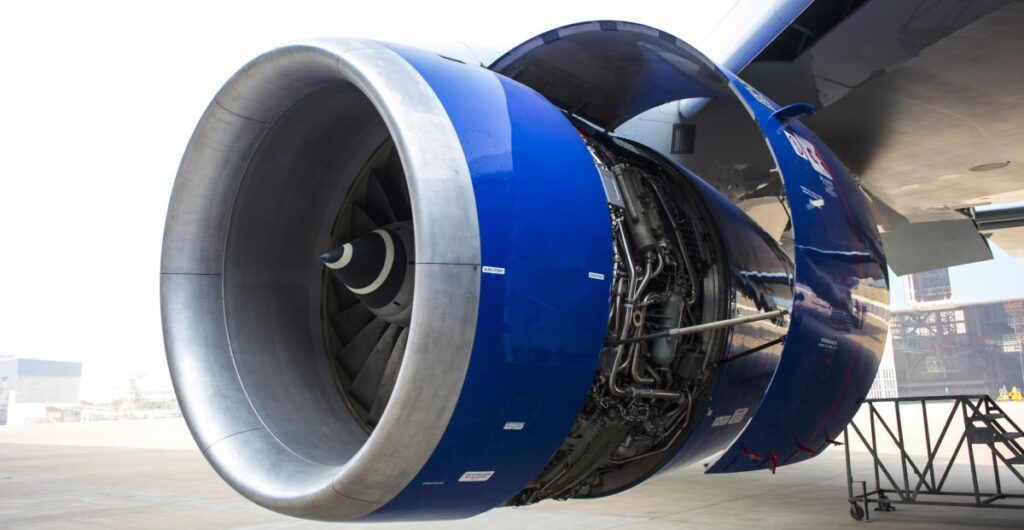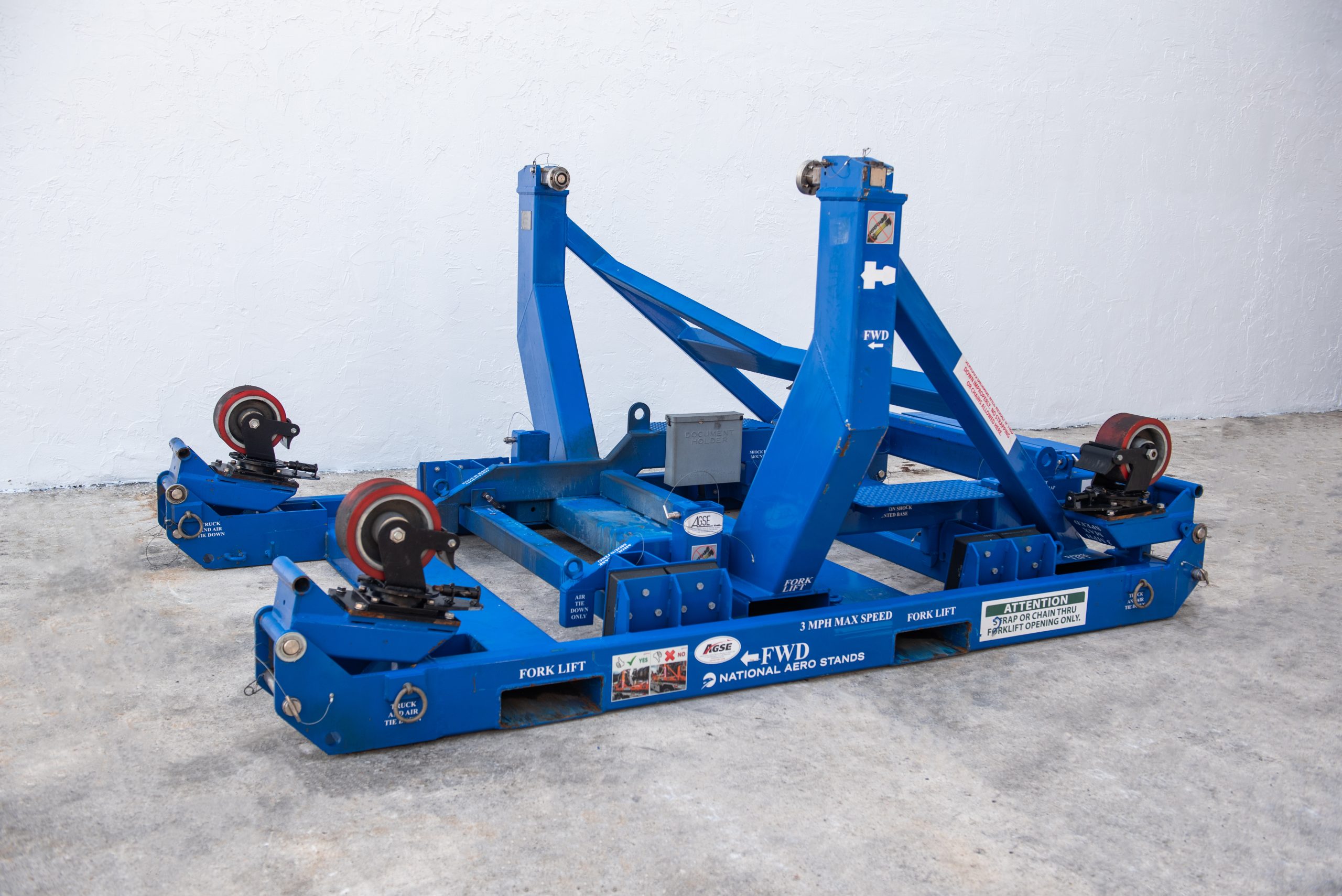The proper maintenance of an engine stand CFM56 is crucial for aviation professionals looking to maximize engine lifespan and operational safety. These specialized support structures from https://stands.aero/ are essential for handling, transporting, and storing CFM56 engines that power many commercial aircraft worldwide. Proper stand maintenance not only protects your valuable engine assets but also ensures workplace safety and compliance with industry standards.
Understanding CFM56 Engine Stands
CFM56 engine stands are engineered support structures designed to securely hold aircraft engines during maintenance, transportation, and storage. These stands feature robust steel welded frames, tubular support arms, and shock-absorbing mounts that protect engines from damage during handling operations.
Key Components That Require Regular Attention
Every CFM56 engine stand contains several critical elements that need regular inspection:
- Shock mounts that absorb vibration and protect the engine
- Swiveling caster wheels for mobility and positioning
- Locking mechanisms to secure the engine in place
- Structural frame and welds that provide overall integrity
- Connection points that interface with specific engine mounting locations
Essential Maintenance Practices
Regular maintenance ensures your engine stand remains in optimal condition to protect the valuable CFM56 engines it supports. Implementing these practices will extend stand lifespan and improve safety.
Inspection Protocol
Visual inspections should be performed before each use and more comprehensive examinations conducted annually. Your inspection should include:
- Checking all machined surfaces, pins, and fasteners for wear or corrosion
- Examining the stand structure for damage, weld cracks, or corrosion
- Inspecting shock mounts for deterioration, dis-bonding, or permanent deformation
- Verifying that all locking mechanisms function properly
- Ensuring caster wheels rotate freely and lock securely
Cleaning and Lubrication Guidelines
Proper cleaning and lubrication are fundamental to stand longevity. Follow these steps for best results:
- Clean the stand thoroughly with a soap and water solution
- Rinse completely and dry all surfaces
- Re-lubricate wheel bearings after cleaning
- Apply light grade oil spray to all non-painted machined surfaces
- Use appropriate rust inhibitor on susceptible components

Shock Mount Maintenance
Shock mounts are critical components that require special attention as they protect the engine from vibration damage during transport and handling.
When To Replace Shock Mounts
Replace shock mounts immediately when any of these conditions exist:
- Date stamp exceeds manufacturer’s recommendations
- Rubber shows signs of deterioration
- Rubber becomes detached from mounting plate
- Mount doesn’t move when load is removed
Storage Best Practices
When engine stands will be unused for extended periods, proper storage prevents deterioration and ensures readiness for future use.
Optimal Storage Conditions
For long-term storage of CFM56 engine stands, implement these practices:
- Protect from dust, oil, and adverse weather conditions
- Engage all caster brakes to prevent unwanted movement
- Store in a climate-controlled environment when possible
- Perform periodic inspections even during storage periods
- Apply appropriate protective coverings if stored outdoors
CFM56 Engine Stand Models Comparison
Different CFM56 engine variants require specific maintenance considerations. The table below highlights key differences between stand models:
| Engine Variant | Inspection Frequency | Special Considerations | Weight Capacity |
|---|---|---|---|
| CFM56-3 | Annual | Older design requires extra corrosion checks | 9,000 lbs |
| CFM56-5A/5B | Annual | Compatible with both engine types | 10,000 lbs |
| CFM56-5C | Annual | Additional reinforced components | 11,000 lbs |
| CFM56-7B | Annual | Specific alignment with engine mount points | 9,500 lbs |
Transportation Considerations
Proper transportation protocols prevent damage to both the stand and engine during movement between facilities.
Vehicle Requirements
Before transporting a CFM56 engine on its stand, ensure these conditions are met:
- Use vehicles with air ride (pneumatic) or hydraulic with nitrogen accumulator suspension
- Position the engine lengthwise and secure it so it cannot shift
- Ensure the engine does not protrude from the vehicle bed
- Lock all caster wheels and tow bars in storage position
- Protect the engine with appropriate coverings during transport
Frequently Asked Questions
How often should I inspect my CFM56 engine stand?
Annual comprehensive inspections are recommended, with visual examinations before each use to identify any obvious damage or wear.
What lubrication should I use for engine stand components?
Use aviation-grade lubricants for specific components. Wheel bearings require high-quality grease, while exposed metal surfaces benefit from light-grade oil or specific rust inhibitors that meet military specifications.
How do environmental conditions affect stand maintenance?
Environmental factors significantly impact maintenance needs. Stands used in humid or coastal environments require more frequent inspection for corrosion, while those in dry climates need additional lubrication to prevent seizing of moving parts.
What documentation should I maintain for engine stands?
Keep comprehensive records of all inspections, maintenance activities, and component replacements. This documentation is essential for compliance with aviation regulations and can be crucial if warranty claims arise.
Conclusion
Proper maintenance of CFM56 engine stands is essential for protecting valuable aviation assets and ensuring workplace safety. By implementing regular inspections, appropriate cleaning procedures, and proper storage practices, maintenance teams can extend the service life of both stands and engines while improving operational efficiency. Remember that prevention through regular maintenance is always more cost-effective than addressing failures after they occur.



Leave a Reply